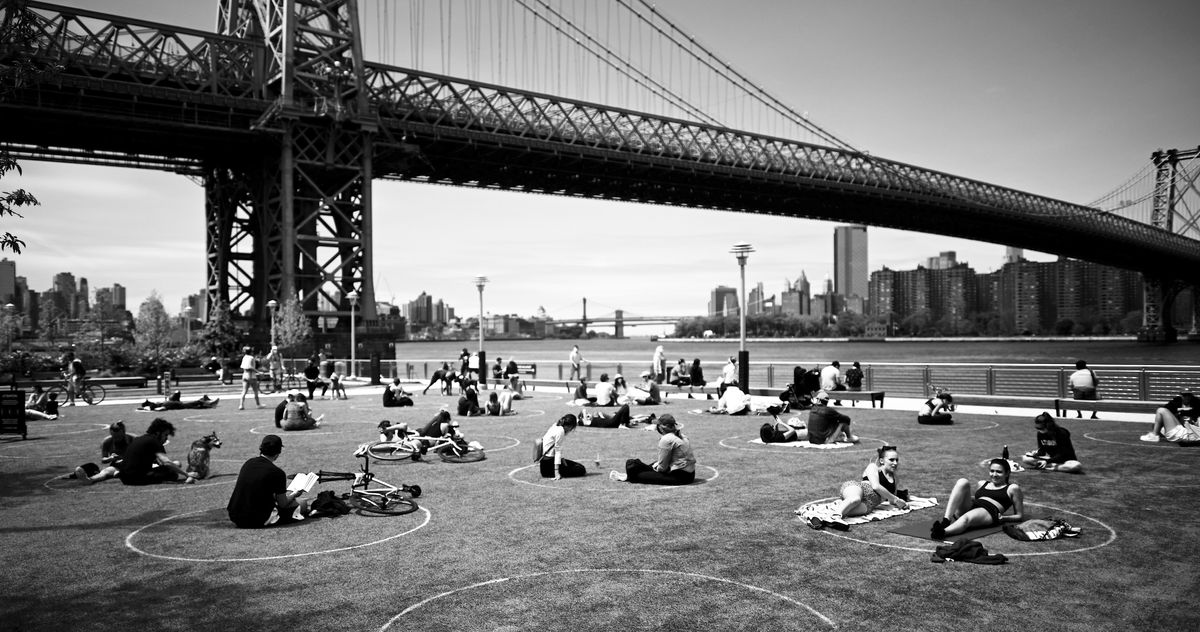
Last spring, about three months after my breast-cancer diagnosis and six weeks after my mastectomy, I received my “oncotype report,†the document that calculated my mortality risk.
So you can imagine, perhaps, how strange it feels to have been sitting inside for the better part of ten weeks to shield myself from COVID-19 that carries a mortality risk that is either “considerably less than one percent,†as Dr.
I walked around with a 3 percent chance that my cancer will recur somewhere awful — in my liver or my bones or my brain — feeling bright and cocky about my future, and now I’m sitting indoors, gaining weight and losing track of the date and occasionally finding myself on my knees in the kitchen based on a far smaller risk whose precise parameters we do not know.
And I’m not saying I’ve got this nailed, this business of living with a number in my head: It took a long time, and a lot of long sessions with an invisible entity (let’s call it Fate) and middle-of-night accountings of expectations and hopes, not to mention a couple surgeries and countless visits with countless doctors — an ongoing fact of my life now — to get to this place, but honestly (and this is the truth), I was hardly thinking about my mortality anymore until the coronavirus came to town.
At 77, Joe Biden has a more than 4 percent probability of dying within a year, according to the Social Security Administration’s actuarial tables.
At 73, Donald Trump has a 3 percent chance — but at 243 pounds (if his doctor is telling the truth), he also falls into the medical category “obese,†a condition that increases his vulnerability to “all causes of death,†according to the CDC. In other words, the likelihood of either one of these men dying before next Father’s Day is far, far higher than that of the average American dying of COVID-19.
(Is it too much to raise Bernie Sanders’s inexplicable ambition here, when, at 78 and having survived a heart attack, his chance of dying within a year is one in four?).
It’s normal for young people to be blind to risk — in hipster Brooklyn on beautiful weekends, young people defy quarantine and throng the streets — as was I long before I ever got cancer.
In my youth, I took stupid risks, starting with the sex and drinking kind (I was lucky to have escaped mostly unmolested: Nearly one in five American women are survivors of rape, and most rapes happen before age 25), but also drunk driving, both as the driver and the passenger (28 percent of all traffic deaths involve alcohol); night swimming (drowning is the seventh leading cause of death for people between 15 and 24 years old); failure to wear sunscreen (even though regular use of SPF 15 or higher reduces the risk of squamous-cell cancer by 40 percent), and hitchhiking (though according to this article, falling carries a greater fatality risk).
My friends and I took backpacking vacations, clueless that one in 15,700 people die in the backcountry every year.
The chance of a 25-year-old woman dying within a year, according to those same actuarial tables, is so small you need a microscope to see it: .06 percent.
I exercised regularly and ate my veggies (heart disease kills nearly 650,000 people each year), put my faith in science — in evidence — and forged ahead.
Even though I’m of Ashkenazi Jewish descent (one in 40 of us carry a dangerous mutation that increases our risk of breast cancer), breast cancer wasn’t even on my radar.
(A first-degree relative with colon cancer doubles your risk.) The women in my family were afflicted with Alzheimer’s and osteoporosis, not breast cancer, and these risks I felt I could kick down the road.
As it turned out, I didn’t have the Jewish breast-cancer gene, but I got the breast cancer anyway.
A recent prepublication study from Stanford University called the mortality risk from COVID-19 for a person younger than 65 with no underlying conditions “remarkably uncommon†and compared the risk to a long commute.
Car accidents are a leading cause of death in America, killing about 36,000 people a year.
Every person in the country has about a one-in-100 lifetime risk of dying in an encounter with a car.
